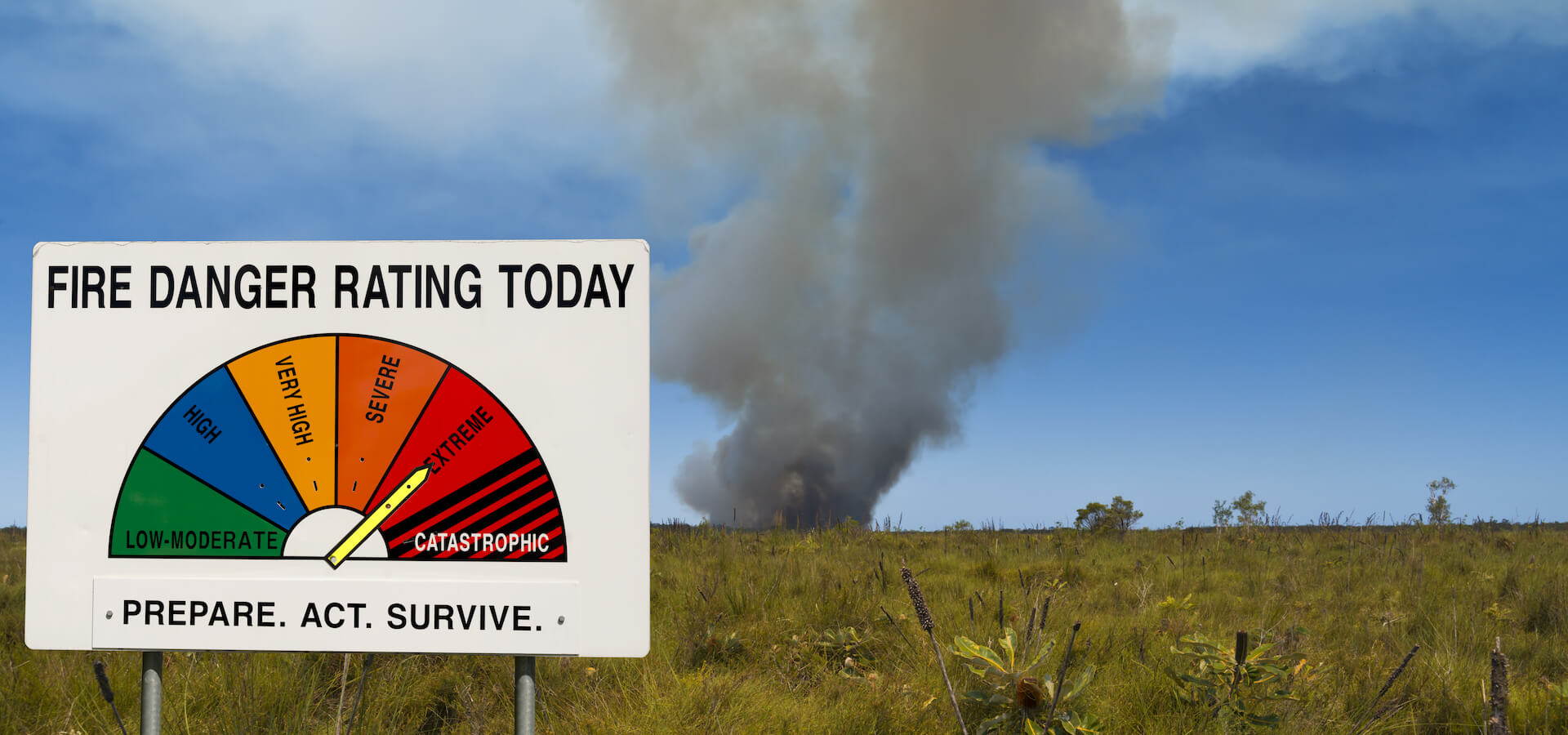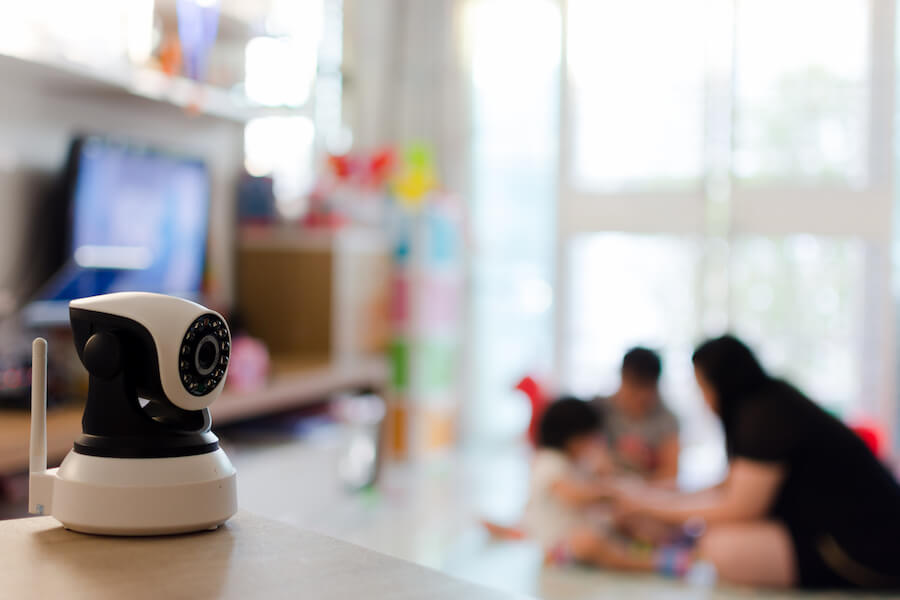Each year, Australians are facing bushfire seasons that are starting earlier, going stronger and lasting longer.
Homes and families are at more risk now than ever. Worsening bushfire conditions are also putting firefighters under pressure, as fires become more frequent and harder to predict due to changing weather patterns.
These intensifying effects of climate change have forced residents all over the country to learn how to prepare for bushfires and take action to protect their homes.
Bushfires are a dangerous and serious problem in many parts of Australia, particularly if you live in a rural area. But even the city suburbs aren’t immune. If you live near the bush, parks or grasslands, here are bushfire safety tips to help prepare your home and family for a bushfire emergency.

Topics in this article:
How to prepare your house for a bushfire
Even if your bushfire survival plan involves leaving your property, you should still prepare your house and its surrounds for a fire.
Certain modifications can be made to your home to keep it as fire resistant as possible. Windows, doors, roofing and deck areas are all vulnerable to ember attacks and should be safeguarded first. Insulated seal gaps and non-combustible sills can help deter sparks from entering the home and catching alight.
The sub-floor of your home should also be sealed with materials such as brick, concrete or masonry. This area is a major problem with fires, as embers can easily get under sub-floors.
Specially designed firesafe screens can also be installed on entry points to allow for safe exiting in case of a fire. If you live in a fire-prone area, adding Egress fire exit screens to all windows to provide safe exit points, which are tested to withstand Australian bushfires. This is necessary if the fire has blocked the typical exits, which can be common for bushfires that begin at night.
Ember proofing window and door screens may also help to withstand ember attacks, minimising the risk of your home burning down.
Plan ahead
Plan ahead and create a fire protection zone to reduce the risk of fire and/or flames and heat getting near your home.
This protection zone can be created by undertaking a number of maintenance tasks around your property. Some essentials to consider include:
- Gutters: Clean out debris from gutters and other roof fittings. Metal leaf guards can also be installed to prevent build ups.
- Gardening: Keep trees and shrubs trimmed, especially overhanging branches near the property. At ground level, keep grass trimmed to less than 10cm and rake up leaves. Use pebbles and rocks in your garden instead of flammable mulch.
- Flammable items: Remove gas, paint, rubbish, chemicals, furniture, door mats, pot plants, woodpiles and other flammable items away from the deck and house area.
- Water: Check there’s enough water on site, including a long garden hose to reach your property’s boundary. If you have a pool, leave it filled as this can be used as an emergency water supply if needed.
- Gas: Turn off your gas supply, especially if you need to evacuate the property
- Insurance: Make sure your insurance is up-to-date and has adequate cover for your property and contents.
- Evacuation plan: Create a manageable emergency evacuation plan.

Educate your family
Preparing for bushfire season can be a stressful time for those living in at-risk locations.
Once you have a bushfire safety plan in place, it’s crucial the entire household are made aware – even the kids. Take the time to practice fire drills with the family, including the location of safe meeting points in the event of an emergency.
Parents need to speak with their children about the risks of bushfires and the possibility of emergency evacuations. Assign specific, manageable and age-appropriate tasks to your children and include them in any bushfire survival plans. This will help them learn that the decisions aren’t being made for them, but with them.
Make your pets part of your bushfire plan
If you have pets, it’s crucial you include them in your bushfire emergency plan. This will maximise their chance of survival.
Have your pet’s carrier ready with water, food and their favourite toys to keep them occupied. Keep wet towels on hand if they overheat and set up plenty of shade and water for them. If they have any signs of serious overheating, such as excessive panting or vomiting – get them to your local vet immediately.

Create a bushfire emergency kit
An emergency kit should be packed as early as possible with the essential items needed to protect against hazards commonly encountered in a bushfire. Be sure to keep it in a handy location.
Some of the things you might include in your bushfire survival kit are:
- First aid kit.
- Mobile phone and charger.
- Spare batteries.
- Torch and battery-operated radio.
- Wool blankets.
- Emergency phone numbers.
- Loose fitting clothing for all family members.
- Adequate amount of water.
- Local area map.
- Waterproof bag for valuables.
- Any easy-to-take valuables.
- Any items you need for your children and pets, including medications. Important documents and family photos can be kept in a fireproof safe inside your home.
Check bush fire alerts
Get into the habit of checking bushfire warnings, fire danger ratings, incidents and alerts regularly in your region, and more frequently on Total Fire Ban days. You may receive warnings over your landline or mobile during a fire based on your location. The CFA advise that ‘warnings are issued when a fire has started and you need to take action’ and that it’s important to understand the three different bushfire alert levels. In Victoria, they are:
- Advice- an incident has occurred, access info and monitor conditions.
- Watch and act- an emergency is developing, take action now to protect yourself and others.
- An emergency warning- you are in imminent danger and need to take action.
Here are some useful bushfire incident map resources to bookmark:
- Bushfire alerts Victoria
- Bushfire alerts NSW
- Bushfire alerts WA
- Bushfire alerts SA
- Bushfire alerts TAS
- Bushfire alerts QLD
- Bushfire alerts NT
Know when to leave
Whilst it’s in many homeowners’ natures to want to stay and protect their property, catastrophic fire conditions will require you to evacuate.
Residents in fire-prone areas are advised to leave hours before any threats. In WA, the DFES have real-time fire alerts and warnings, and local fire fighters will advise when it’s time to go.
Remember, it’s always better to protect you and your family by leaving, rather than staying to fight if the conditions are unsafe.







I love how you said to keep your gutters clean of debris because that’s something I never would have thought of. Leaves do get caught in them though, and since they’re so dry they burn easily. I’ll make sure I clean out my gutters soon so that my house and roof are safe.